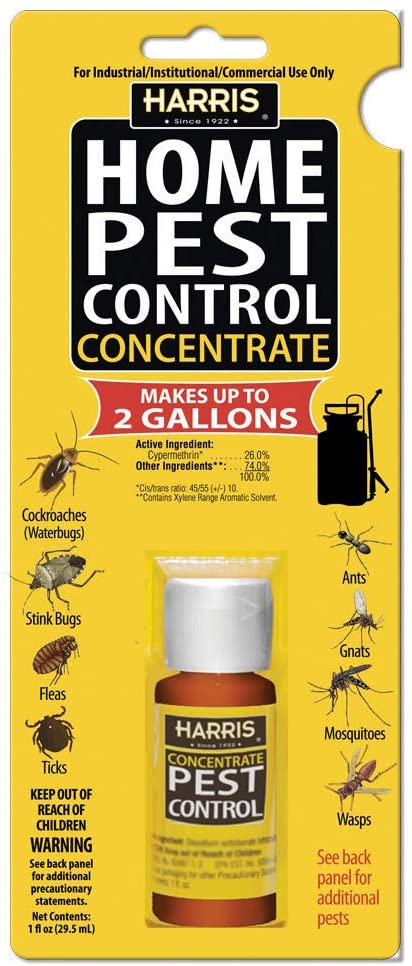Experienced A1 Exterminators Charlotte NC - Rapid and Reliable Solutions
Experienced A1 Exterminators Charlotte NC - Rapid and Reliable Solutions
Blog Article
Bed Pest Treatment Malfunction: Comparing Chemical Vs. Non-Chemical Solutions
In the realm of insect control, particularly when handling the persistent issue of bed insects, the option between chemical and non-chemical treatment options can be a crucial one. Both approaches use distinctive advantages and disadvantages, influencing elements such as performance, security factors to consider, and total cost. By examining the nuanced details of each approach, a clearer understanding of which path to pursue in dealing with a bed pest problem can be acquired.
Efficiency of Chemical Treatments
Chemical therapies for bed bug infestations have been extensively recognized for their rapid and potent efficacy in eradicating these bugs. When taking into consideration the effectiveness of chemical therapies, it is crucial to recognize that they can provide a complete and fast solution to a bed insect issue. Expert pest control specialists frequently rely upon pesticides to target bed pests at various stages of their life cycle, including eggs, fairies, and adults. These chemicals typically work by interrupting the bed insects' nerves, causing paralysis and eventual death.
Moreover, chemical therapies have the benefit of supplying recurring impacts, meaning that they can remain to get rid of bed bugs even after the preliminary application. This residual activity is specifically beneficial in combating any kind of prospective re-infestations. Additionally, the quick action of chemical treatments can bring alleviation to people dealing with serious bed insect problems, enabling them to regain control of their home rapidly.
Safety Worry About Chemical Solutions
One vital element that calls for careful factor to consider when using chemical solutions for bed insect treatment is ensuring the safety of passengers and the atmosphere. While chemical treatments can be efficient in eliminating bed bugs, they might position risks if not taken care of correctly. One of the main safety and security interest in chemical solutions is the possible injury they can cause to human health and wellness. Exposure to specific chemicals used in bed insect treatments can result in respiratory system problems, skin irritation, or various other negative responses, especially in people with pre-existing problems or level of sensitivities. Furthermore, improper application or dosage of chemical pesticides can lead to hazardous residues sticking around in the treated location, posing long-term wellness risks to residents.
Furthermore, the ecological impact of chemical options is another substantial consideration. Some chemicals utilized in bed bug therapies may be harmful to beneficial insects, wildlife, and communities if they seep right into the dirt or water systems. It is vital to use chemical treatments sensibly, following safety and security guidelines, and thinking about less toxic alternatives to reduce these dangers and ensure the reliable and risk-free management of bed bug invasions.
Advantages of Non-Chemical Methods
Considering the prospective safety problems and ecological effect connected with chemical solutions for bed insect therapy, exploring non-chemical strategies provides an appealing option with a number of distinctive advantages. Non-chemical therapies are environmentally friendly, as they do not add to air or water pollution, making them a sustainable option for pest control.
Furthermore, non-chemical solutions can be efficient in targeting bed insects, including hard-to-reach areas where chemical treatments may not pass through - A1 exterminators charlotte nc. Approaches such as heat treatment, vacuuming, steam cleansing, and mattress encasements supply comprehensive elimination without the use of dangerous chemicals.
Limitations of Non-Chemical Treatments

Additionally, non-chemical treatments often require several applications to accomplish successful eradication. This can be taxing and may not always assure full elimination of all bed insects and their eggs, specifically in surprise or hard-to-reach locations.
Additionally, the success of non-chemical therapies heavily relies on proper implementation and thoroughness, which can be testing look at this now for people without expert experience. Poor application of non-chemical methods may result in incomplete elimination, resulting in persistent invasions and the demand for added therapies.
As a result, while non-chemical therapies have their advantages, it is vital to acknowledge these constraints and consider them when figuring out one of the most reliable method for managing bed pest invasions.
Expense Comparison: Chemical Vs. Non-Chemical Options
Given the restrictions related to non-chemical treatments, an essential aspect to evaluate in the context of bed pest monitoring is the price comparison in between chemical and non-chemical alternatives. Chemical therapies typically entail the application of insecticides by experts, which can range from $250 to $900 per room, relying on the severity of the problem and the dimension of the location to be treated. On the other reliable pest control hand, non-chemical therapies like heat therapy or vapor can be a lot more expensive, with prices ranging from $1,000 to $6,000 for an entire home. While the first price of chemical treatments may appear reduced, multiple therapies may be called for to fully get rid of the problem, potentially increasing the overall expense. On the various other hand, non-chemical alternatives might provide a much more green and sustainable solution, although they can be cost-prohibitive for some individuals. Ultimately, when considering the price of bed bug treatment options, it is essential to evaluate the in advance expenses against the efficiency and lasting sustainability of the chosen technique.
Conclusion

Thinking about the potential safety and security worries and ecological effect linked with chemical solutions for bed bug treatment, checking out non-chemical strategies provides an appealing choice with several unique advantages.Given the restrictions connected with non-chemical therapies, a necessary element to assess in the context of bed bug administration is the cost comparison between chemical and non-chemical options. In contrast, non-chemical treatments like heat treatment or steam can be more costly, with prices varying from $1,000 to $6,000 for a whole home. While the first cost of chemical therapies might seem lower, numerous treatments might be needed to totally eliminate the invasion, possibly increasing the total price.In conclusion, when contrasting chemical and non-chemical bed bug therapy alternatives, it is important to take into consideration try this out efficiency, safety and security, advantages, constraints, and expense.
Report this page